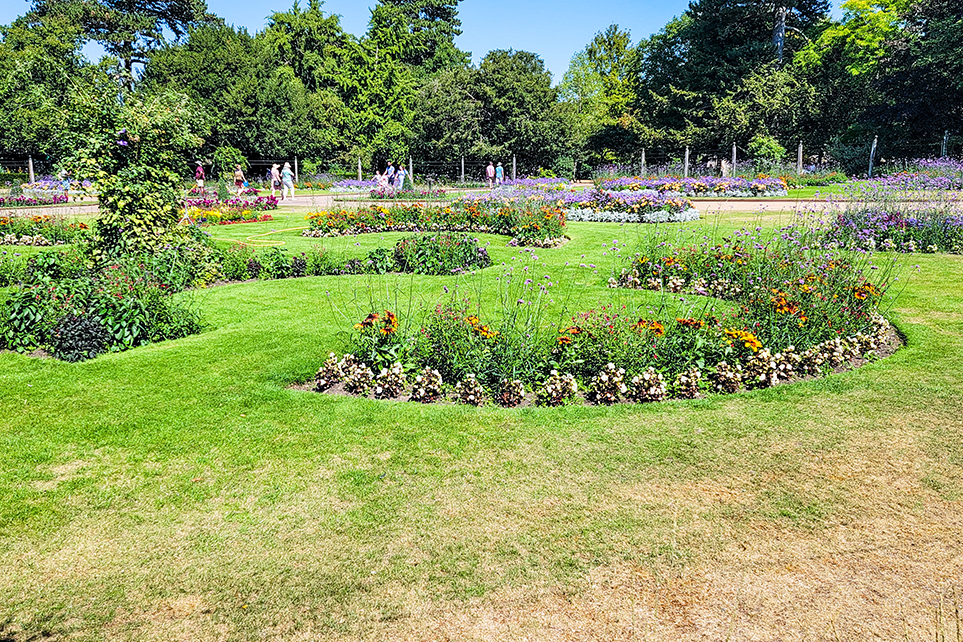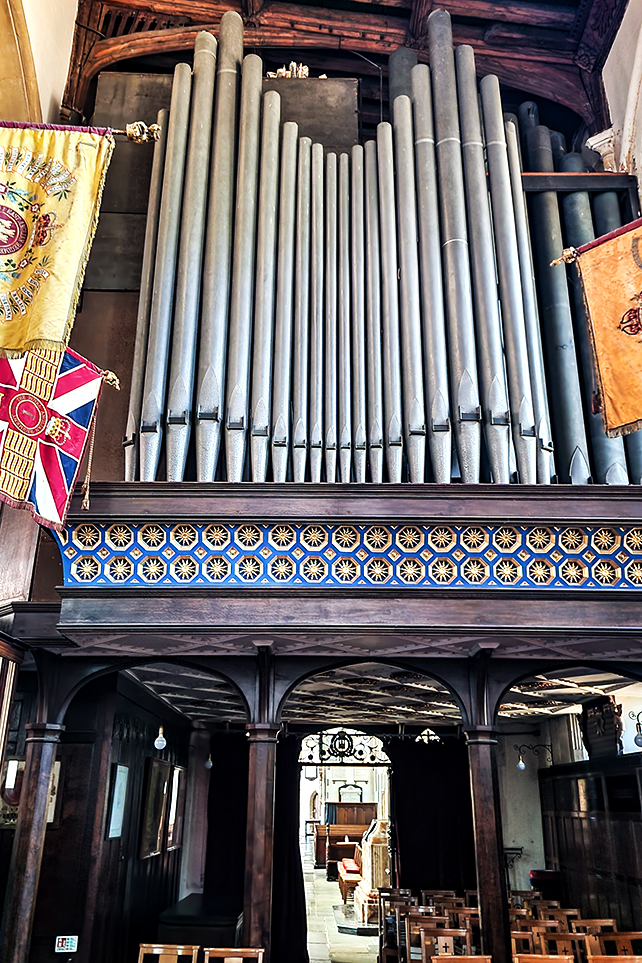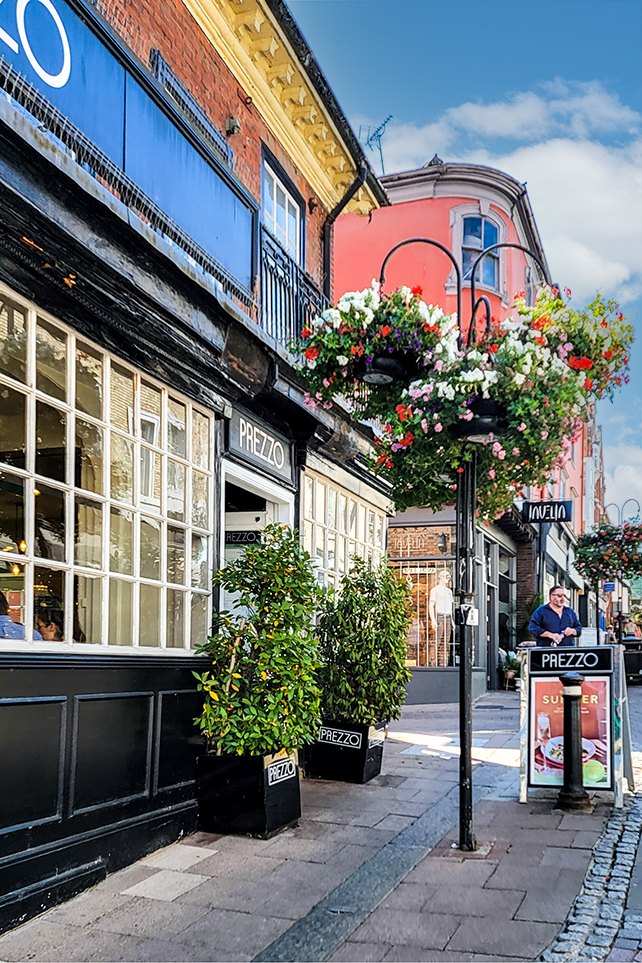
We ventured to the charming town of Bury St. Edmunds in search of an English village filled with castles, historical churches, and beautiful gardens.
We were not disappointed in our discovery in the Suffolk region of eastern England. I recommend spending some time here if you can, as it is not too far from Cambridge and an easy day trip from London.
The town is a treasure trove for those who enjoy history when traveling. The place is unique and diverse, providing visitors with much to see.
HISTORY
Over 1000 years ago, Bury St. Edmunds was the home of Saint Edmund, the original patron Saint of England. It had one of England’s most prosperous, largest, and most powerful monasteries in medieval times. As a result, people from all over Europe flocked to visit St. Edmund’s Shrine.
During the Anglo-Saxon times, the Suffolk region (where Bury St. Edmund is located) formed part of the kingdom of East Anglia, the wealthiest of kings of this period.
Situated in the grain production district of East Anglia (Suffolk), Bury St. Edmunds is an important agricultural market and rural service center. Its industries include brewing, processing of beet sugar, and other related agricultural produce.
Here are my recommendations of sites worth seeing and more:
Bury St. Edmunds Abbey and the Abby Garden
As you walk towards the Abbey, you will be mesmerized by the Norman Abbey Gate. You won’t miss this grand entrance as you enter the Abbey grounds. I feel these gates set the tone of how important the Abbey was for this region due to the elaborate architectural details.

The Abby is a little over 1000 years old, built in 1020, where it housed the body of St. Edmund – who was then the patron Saint of England. Because of this, the site became an important pilgrimage destination.

The gardens surrounding the Abbey are stunning. It has strong ties to Magna Carta because, in 1214, King John, the ruler, discontented earls, and barons insisted the King grant them rights. This resulted in the sealing of the Magna Carta.
It has become a beautiful public space for residents and visitors to enjoy. We strolled through the gardens and saw friendly squirrels playing in the grass.
- Hours: Monday – Saturday, 7:30 – 20:00 in summer (close at 16:30 in the winter). Sunday 9:00 – 20:00 in summer (close at 16:30 in the winter)
- Admission: FREE


Pillar of Salt
The road sign, known as the Pillar of Salt, was constructed in 1935 as the central point of important buildings and standing close to the former Abbey gatehouse.
The sizeable octagonal pier sign has an austere, slightly oversailing lantern on top and projecting box-framed road signs in three directions.

Bury St. Edmunds Guildhall
The first written mention of the Guildhall was in 1279 when it was recorded that the building was visited by Lords John of Cobham and Walter de Heliun. However, based on other documents and an examination of the building, it is believed that the original medieval stonework came long before the 1200s.
After the downfall of the Abbey in the 16th century, Guildhall became the focus of civic life in the city and remained this way until the late 20th century. Today, Guildhall is operated as a venue for special events.
Admission: Free but tours are available.

Moyse’s Hall Museum
Located in a building that dates back to the 12th century is the Moyse’s Hall Museum. Here you can learn about the city’s history, including crime, punishment, and mummified cats. In addition, the museum explains the dark history of Bury St. Edmunds and is devoted to the witchcraft and corruption of the town.
The museum also offers an impressive clock and watch collection – one of the largest in the UK, an extensive collection of paintings and fine art, including Mary Beale, and some military history. This museum offers interesting memorable, one place you don’t want to miss.
- Hours: Monday – Saturday 10:00 – 17:00; Sunday 12:00 – 16:00.
- Admission: Adults £14

St. Edmundsbury Cathedral
One of the most beautiful churches in Suffolk is St. Edmundsbury Cathedral. Interestingly, the original name of the church was St. Denis Church. It has been a worship site for over 1000 years, near the Abbey ruins.
The stained glass inside the gorgeous cathedral makes this church so unique. Due to its beauty and stunning glasswork, it has become the local’s favorite place to get married.
While visiting the church, the ‘Threads Through Creation’ exhibit was taking place with twelve HUGE spectacular silk panels retelling the creation story from the bible.
- Admission: Free; Tours are available from May – September for £5 per person. Check the website for tour options.


The Charnel House
The Chapel of the Charnel, or the Charnel House as it is called, was built in the 13th century to store the bones exhumed from the Great Churchyard to make way for new burials. In addition, there are several plaques and memorials, notably that of Captain Bartholomew Gosnold. He was the explorer who colonized the area with the first English settlers to North America and named Martha’s Vineyard after his daughter.

St. Mary’s Church
Famous for being the resting place of Mary Tudor (sister of Henry VIII) is another grand cathedral of Suffolk, St. Mary’s Church.
Mary Tudor had married the Duke of Suffolk, so when she died, she was buried in the Abbey of St. Edmunds. When Henry VIII dissolved the monasteries, her remains were moved to St. Mary’s Church. The tomb is very simple in design, but an interesting bit of history to see.
- Admission: Free




The Norman Tower
The Norman Tower, built between 1120 – 1148, was the gateway into Bury St. Edmund’s great abbey church housing twelve delicate distinguished bells. It is one of the oldest Norman buildings in England and has never been altered.
The original ten bells were cast by Thomas Osborn in 1785. The heaviest bell, the ‘tenor,’ weighs over 27 hundred pounds and sounds like the note C#.
In 1973 the bells were re-hung in a cast iron frame lower down the tower. In 2010 an appeal was launched to augment the bells to a cathedral ring of 12, so two new trebles (lighter bells) were dedicated on Easter Sunday, 2012. A 13th bell was added in 2013.
About 175 full peals have been rung since recording began in 1879. The bells are rung on Sundays from 9:00 am, and quarter peals are regularly rung before Sunday evensong. The bells are also rung for weddings and other special occasions.
- The tower is not open to the public.

Wander the Shops
The streets are a lovely place to walk while window shopping. The town has kept that old English village charm, offering many coffee shops, boutiques, and pubs to enjoy!

The Nutshell
The Nutshell is a pub in the center of Bury St. Edmund that claims to be the smallest pub in Britain. The Nutshell has been proud to serve customers jostling for a place at the bar since its doors opened in 1867. Here you will find the tradition of serving the region’s finest ales, with interesting historical items, photos, and memorabilia throughout the pub.

The Greene King Brewery
For over 200 years, Greene King Brewery has provided quality cask ales at the Westgate Brewery. Even more impressive is that brewing can be traced back to the Domesday book in 1086.
A new brewhouse was built in 1939 – Westgate Brewery – and is still being used today.
Take a brewery tour and visit the Green King Beer Café. Here you will get a tour of some of the oldest buildings in the town and learn how they were used throughout history. In addition, you will learn how they brew beer and enjoy a tasting. Visit the website if you are interested in booking a tour.
PLACES TO EAT
- Afternoon tea is common in England. Harriet’s Café Tearooms offers a delightful place to enjoy a cup of Earl Grey Tea with a freshly baked scone. In addition to teas and scones, Harriet’s serves coffees, pastries, breakfast and lunch options.


- Paddy and Scotts is a great place to visit after exploring the Abbey, known for being a brilliant little café with some of the best coffee in town. In addition to coffee, they also serve many little lunchtime snacks.
- If you are hungry for traditional fish and chips, try Bury Fish & Chips for lunch. This little family-owned restaurant is inexpensive to grab a bite to eat. There is a small outdoor patio where you can enjoy your catch in the spring and summer.

- Visit the Maison Blue Restaurant for French fine dining. Try a sample tray of wide varieties of cheese on the cheese trolley while they explain each flavor. The menu may change according to the season.
- If you want international food, I suggest trying Voujon, the best Indian food in Suffolk. They combine traditional Indian cooking with a contemporary dining experience.
Enjoy your travels! Please read my blogs about other exciting places around the world at Traveling Lens Photography.
If you want to read more follow me on Facebook, Instagram, or Pinterest as I share my journey.
Happy Travels!









